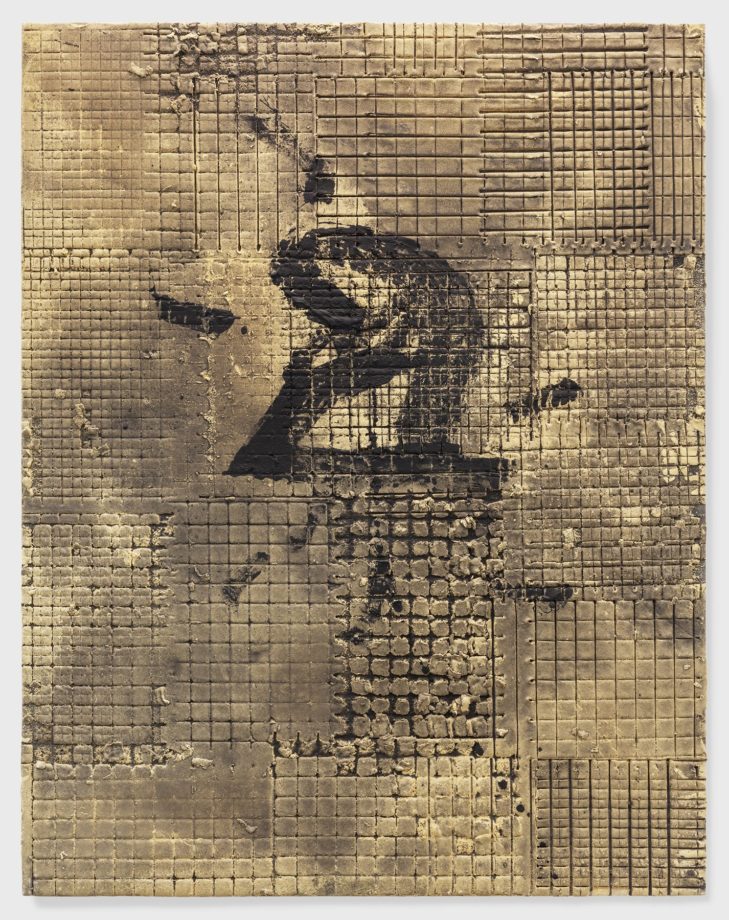
For Tàpies, art is ritual, not commodity. It is not intended to be worshiped, but neither is it meant to decorate or please. The purpose of art, then, is to alter and heighten consciousness, bringing us into contact in the most powerful way with reality, not as it is pictured but as it literally exists in time and space, a constant reminder of our own mortality and of man’s inability to tame and civilize a base and violent nature. ln this series of recent paintings, one sees Tàpies in full possession of his powers.’ Barbara Rose, ‘Painter, Poet, Visionary’ in Antoni Tàpies at 80, 2003. Over nearly seven decades, Tàpies—both artist and influential philosopher of art—created a prolific and singular body of work that redefined painting and the way colors and physicality are manifested through the medium, thereby influencing future generations of artists and fascinating curators and museums around the world. This notable legacy has been memorialized and expanded upon through the work of the Fundació Antoni Tàpies, which, along with the Fundació Joan Miró and Museu Picasso, completes the trio of museums representing Barcelona’s century of major contributions to painting and the development of 20th century art.
Works in the exhibition span two decades, ranging in date from 1990 to 2008, and include both paintings and works on paper, highlighting the artist’s constant experimentation with materials.
Antoni Tàpies (b. 1923, Barcelona; d. 2012, Barcelona) is recognized as one of the leading artistic voices to emerge from postwar Europe. Working in parallel with global art movements including Abstract Expressionism, Gutai, Art Informel, Tachisme, and Arte Povera, Tàpies believed that his era required a new kind of existential expression. Influenced by Surrealist methods while a member of the avant-garde Dau al Set group in postwar Barcelona, he came to develop a unique form of automatism and to reject representation and the illusionistic picture plane. He incorporated unconventional media such as textiles, straw, detritus, and found objects into his work, accentuating their tactile and material nature. The earthy, distressed surfaces of his works relate to themes of entropy and decay, challenging the viewer to find beauty in what is typically over-looked. Tàpies’s oeuvre resides between figuration and abstraction, matter and mysticism, as manifested through his painting, sculpture, drawing, collage, and printmaking. His work is included in some of the most significant public collections across the world, including the AlbrightKnox Art Gallery, Buffalo, New York; The Baltimore Museum of Art, Maryland; Berkeley Art Museum and Pacific FOR IMMEDIATE RELEASE Film Archive, University of California, Berkeley; Centre Pompidou, Paris; Fondation Beyeler, Riehen, Switzerland; Fondation Maeght, Saint-Paul de Vence, France; Fundació Caixa de Pensions, Barcelona; Fundació Joan Miró, Barcelona; Galleria Nazionale d’Arte Moderna, Rome; Hirshhorn Museum and Sculpture Garden, Smithsonian Institution, Washington, D.C.; Instituto di Tella, Buenos Aires; The Israel Museum, Jerusalem; Kunstmuseum Basel; Kunsthalle Hamburg; Kunsthaus Zürich; Louisiana Museum of Modern Art, Humlebæk, Denmark; Moderna Museet, Stockholm; Museo de Arte Moderno, São Paulo; Museo Nacional Centro de Arte Reina Sofía, Madrid; Museo de Arte Contemporaneo, Madrid; Museo d’Arte Moderna, Bologna; Museo d’Arte Moderna, Venice; Museum moderner Kunst Stiftung Ludwig Wien, Vienna; Museum of Contemporary Art, Los Angeles; Museum of Fine Arts, Boston; The Museum of Fine Arts, Houston; The Museum of Modern Art, New York; National Gallery of Victoria, Melbourne; Ohara Museum of Art, Okayama, Japan; San Francisco Museum of Modern Art; Solomon R. Guggenheim Museum, New York; Tehran Museum of Contemporary Art, Iran; and Tate, London.
quepintamosenelmundo, art, visual arts, spanish art, art online, contemporary art, painting
Pace gallery. Quai des Bergues 15-17 Geneva
Image: Antoni Tàpies, A damunt quadrícula, 1992, mixed media on wood, 57-3/4″ × 45-1/4″ (146.7 cm × 114.9 cm) © Fundació Antoni Tàpies / Artists Rights Society (ARS), New York / VEGAP, Madrid
